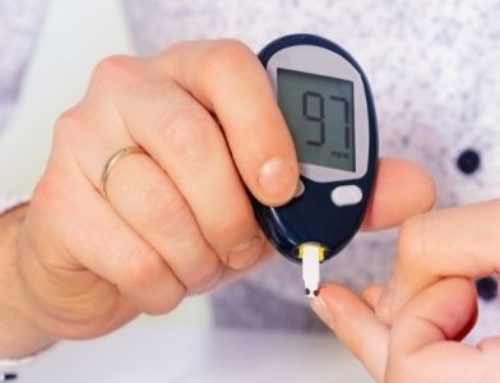
I really love Jamie Oliver!
He’s fantastic at making nutrition messages relevant, especially when he uses wheelbarrows and buses full of sugar as an effective shock tactic.
However, as I watched his T.E.D talk one night on my laptop, I noticed that, while he talks fervently about how diabetes and other health conditions are preventable with diet, he doesn’t explain why diabetes is something to avoid or what having diabetes means to a person’s health and quality of life.
And fair enough – it’s not his job to elaborate on this complex medical condition. But it does often leave people with only a vague sense of what diabetes is. Diabetes has become this mystery disease that everybody is going to get and nobody knows what to do about it – except to avoid a wheelbarrow full of sugar!
I’d like to clear up that mystery a little.
What should be happening…
Under normal circumstances, when you eat, the carbohydrates and sugar in your food (such as potatoes, bread, rice, pasta, fruit, sweets, etc) are broken down into glucose (a type of sugar) and absorbed into your bloodstream. As the glucose increases in your blood steam, your body releases a hormone from the pancreas called insulin. Insulin helps to remove the sugar from your blood and put it into other parts of your body (muscle cells, fat cells and liver cells). Insulin plays an important role because having too much or too little glucose in your blood can have pretty negative effects on a person’s short term and long term health.
How blood sugar levels can affect you day to day…
The other day I was running around getting some shopping and errrands done before a friend’s wedding and I didn’t get a chance to eat. When I got home that afternoon I was feeling a bit faint and I couldn’t concentrate. There wasn’t enough sugar in my blood to feed my brain and I was experiencing the mild effects of hypoglycemia (low blood sugar).
I’m sure a lot of you can recall a similar situation and, for most of us the effects are temporary and easily fixed. For people with diabetes, monitoring their blood sugar levels is a daily necessity in order to avoid dangerous extremes.
Symptoms of diabetes
Diabetes mellitus (the fancy name for diabetes) is a complex group of conditions which affect the hormone insulin and limits the body’s ability to keep the amount of blood sugar at a safe level. Hypoglycemia (low blood sugar levels) can cause : – Dizziness – Headache – Irritablility – Hunger – Numbness in fingers and lips Hyperglycemia (high blood sugar levels) can cause: – Excessive thirst and urination – Weightloss – Confusion – Infections and poor healing – A life threatening condition called ketoacidosis The most important thing to know is that there are a few different types of diabetes and they are caused by very different things.
Type 1 diabetes mellitus
Type 1 diabetes is not related to lifestyle. The exact cause of Type 1 is not fully understood but we do know that the pancreas becomes unable to produce insulin effectively. So there is little or no insulin produced to help reduce the sugar levels in the blood. People with Type 1 diabetes often need to replace their own insulin with insulin injections or insulin pumps. It can be a tricky process working out how much insulin a person will need, and at what time. If no food has been eaten but insulin is given, blood sugar levels can drop dangerously low causing hypoglycaemia. The opposite is also true. If too much carbohydrate or sugar has been consumed and insufficient insulin has been given, blood sugar levels can become dangerously high. People using insulin injections or pumps must track their carbohydrate intake so it can be matched to insulin levels as accurately as possible.
Type 2 diabetes mellitus
Type 2 diabetes is related to lifestyle, as well as a number of other factors including genetics, body shape and age. Type 2 diabetes results from the cells throughout the body becoming resistant to the effect of insulin. So, while insulin is still being produced by the pancreas and is trying to remove sugar from the bloodstream, the muscles, fat and liver cells are not responding. Again, this causes blood sugar levels to remain high. The good news is that the early stages of Type 2 diabetes can be managed with diet and physical activity. Even small amounts of weight loss and regular exercise have been shown to improve blood sugar level control. However, in many cases people with Type 2 diabetes also need the help of medication or insulin injections.
Other types of diabetes
Gestational diabetes – raised blood sugar levels during pregnancy. This occurs in 1 in 20 pregnancies and usually resolves after birth. However, mothers with gestational diabetes are at an increased risk of Type 2 diabetes later in life.
Pre diabetes – blood sugar levels are high, but not high enough to be considered Type 2 diabetes. This condition is also known as impaired glucose (sugar) metabolism.
Secondary diabetes – raised blood sugar levels due to another medical condition or medication.
The moral to this little spiel is that having diabetes is a different experience for each individual. Living and eating with diabetes will look slightly different depending on your circumstances.
Unfortunately, for people with diabetes there is no straight forward ‘diabetic diet’. However, when you think about it, not having a ‘diabetic diet’ is actually quite a fortunate thing. It opens the doors to all the wonderful possibilities for delicious and nutritious foods.
If you have diabetes of any type or are looking for some help with making nutrition decisions, we would love to meet with you and help you out.




